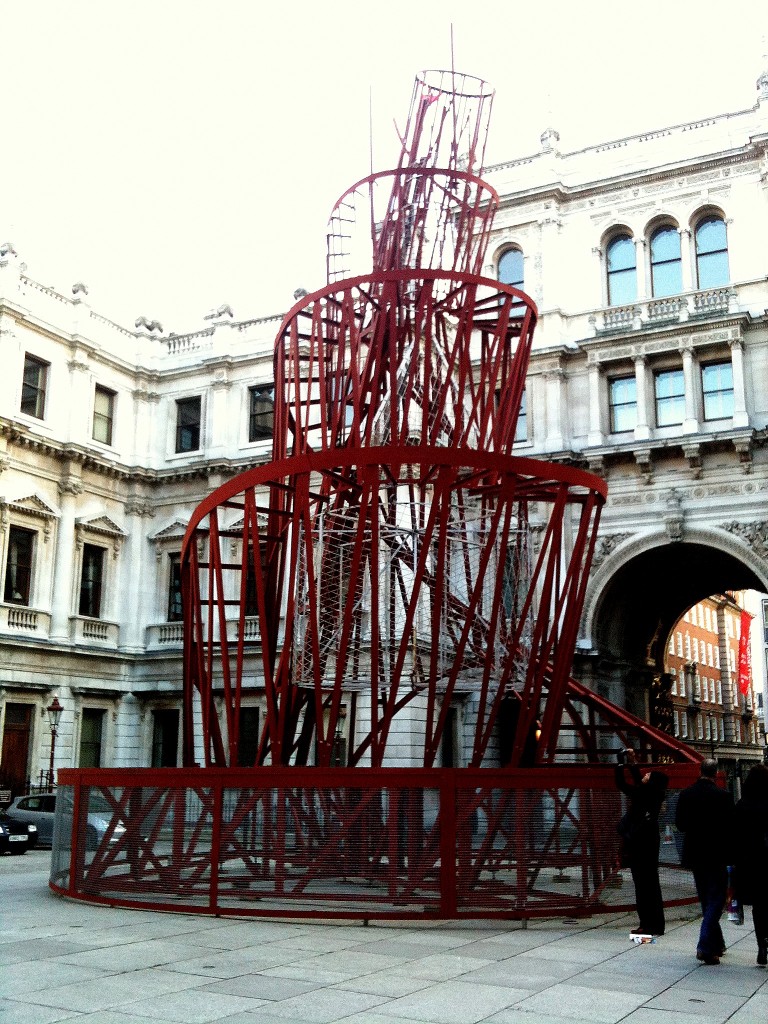BUILDING THE REVOLUTION – SOVIET ART AND ARCHITECTURE 1915 – 1935
 Today was the last day of exhibition called ‘BUILDING THE REVOLUTION – SOVIET ART AND ARCHITECTURE 1915 – 1935’ held at The Royal Academy of Arts London.
Today was the last day of exhibition called ‘BUILDING THE REVOLUTION – SOVIET ART AND ARCHITECTURE 1915 – 1935’ held at The Royal Academy of Arts London.
The exhibition looked closer at the Russian avant-garde art and its two dimensional forms transformed in to three dimensional architecture. After Bolsheviks under leadership of Vladimir Ilyich Lennin took absolute power over Soviet Union by 1921, art and architecture turn to new radical visions and formed radical organisations following footsteps of modernist architects such as Le Corbusier and Erich Mendelsohn. In these desperate times new visionary responses were generated and so new constructivist architecture was moving away from the past and held the same principle as modernist ‘form follows function’.
Geometric simplified forms seen in art were translated into pure geometric shapes, flat roofs and pilotis of architecture. Housing projects were incorporating communal living spaces such as canteens, libraries, kindergartens all of whose were to promise better life for families living in these newly constructed houses.
Just to mention few buildings that caught my eye firstly for example Tsentrosoyuz Building which was designed in 1929 – 1936 by Le Corbusier himself. The building is seen on the photograph taken by Richard Pare, showing dynamic curved-sloped internal pathways of the building. Another fascinating building is the Gosprom Building designed by Sergei Serafimov, Mark Felger, and Samuil Kravets in 1929 and is located in Kharkov, Ukraine. The building was to house the Soviet’s government’s administrative Offices.
Shabolovka Radio Tower (1922) is also worth mentioning (photograph by Richard Pare). This Radio Tower was designed by Vladimir Shukhov and stands in Moscow, Russia.
The favourite painting of the exhibition must be Solomon Nikritin “La conexión de la pintura con la arquitectura”. The composition of shapes and colours captured my eye from the first moment I entered the room. The painting clearly evoked three dimensional spaces of architecture. At least but not least the courtyard of the Royal Academy displays scaled version of the original model of the Monument to the Third International designed by Vladimír Tatlin in 1920.

